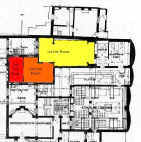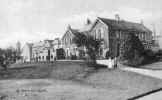1. Introduction

From our twenty-first century viewpoint it might seem surprising that the first Victorian Turkish baths should have caused so much controversy, or presented so many practical problems.
 After all, vapour baths (whether or not medicated in some way) had been around for a considerable time. Hard facts are difficult to come by, but some take the view that returning Crusaders opened ‘hummums’ in London, having discovered the Islamic hammam while in the Levant.
After all, vapour baths (whether or not medicated in some way) had been around for a considerable time. Hard facts are difficult to come by, but some take the view that returning Crusaders opened ‘hummums’ in London, having discovered the Islamic hammam while in the Levant.
 Although by the middle of the seventeenth century, most of them had
turned into bagnios of ill repute, there were a few, such as those of Sake Deen Mohamed and his son Horatio, where the more acceptable vapour bath tradition was maintained.1
Although by the middle of the seventeenth century, most of them had
turned into bagnios of ill repute, there were a few, such as those of Sake Deen Mohamed and his son Horatio, where the more acceptable vapour bath tradition was maintained.1
 And this tradition received a considerable boost at the end of the nineteenth century when immigrant Russian Jews fleeing the pogroms set up new baths in areas where they settled, the most notable being, perhaps, Schewzik’s in the East End of London.2
And this tradition received a considerable boost at the end of the nineteenth century when immigrant Russian Jews fleeing the pogroms set up new baths in areas where they settled, the most notable being, perhaps, Schewzik’s in the East End of London.2
 At first glance, the only immediately noticeable difference between the established vapour, steam, or Russian bath on the one hand, and the so-called Turkish bath on the other, is that in a Russian bath, sweat is produced by bathing in a room full of hot vapour, while in a Turkish bath, sweat is produced by bathing in a room—or series of rooms—heated by hot dry air.
At first glance, the only immediately noticeable difference between the established vapour, steam, or Russian bath on the one hand, and the so-called Turkish bath on the other, is that in a Russian bath, sweat is produced by bathing in a room full of hot vapour, while in a Turkish bath, sweat is produced by bathing in a room—or series of rooms—heated by hot dry air.
Why then were there so many issues to be resolved?
The first experimental hot air bath to be built in the British Isles since Roman times was constructed in 1856 at St Ann’s Hydropathic Establishment near Blarney, by David Urquhart (sometime mp for Stafford) and Dr Richard Barter, owner of the hydro.3



Urquhart
St Ann's Hydro, Blarney
Barter
However, their friendship and co-operation did not last long. Barter was mainly influenced by therapeutic considerations—how to obtain the highest, driest heat possible. While this was also important to Urquhart, he had, in addition, a political agenda—to introduce Turkish culture to Britain in an attempt to encourage a more pro-Turkish, anti-Russian foreign policy.
If these two men, who had initially co-operated so closely, went their separate ways so soon, it is hardly surprising that the Turkish bath generated controversy among those not so committed to its benefits.

